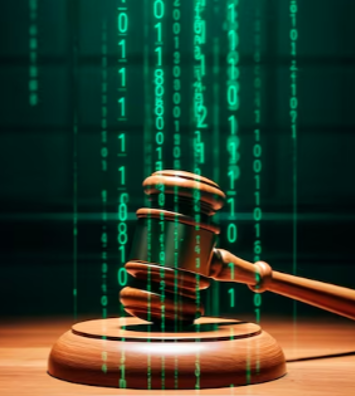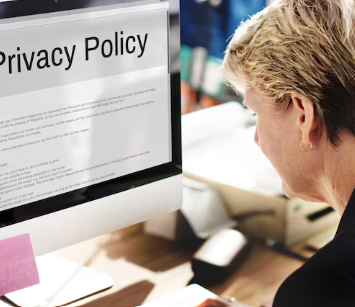Written by Caleb Gilliam-Scott
The European Patent Office (EPO) has released an advance publication in the new referral G 1/23 to the Enlarged Board of Appeal.
The following points of law have been referred to the Enlarged Board:
- Is a product put on the market before the date of filing of a European patent application to be excluded from the state of the art within the meaning of Article 54(2) EPC for the sole reason that its composition or internal structure could not be analysed and reproduced without undue burden by the skilled person before that date?
- If the answer to question 1 is no, is technical information about said product which was made available to the public before the filing date (e.g. by publication of technical brochure, non-patent or patent literature) state of the art within the meaning of Article 54(2) EPC, irrespective of whether the composition or internal structure of the product could be analysed and reproduced without undue burden by the skilled person before that date?
- If the answer to question 1 is yes or the answer to question 2 is no, which criteria are to be applied in order to determine whether or not the composition or internal structure of the product could be analysed and reproduced without undue burden within the meaning of opinion G 1/92? In particular, is it required that the composition and internal structure of the product be fully analysable and identically reproducible?
The EPO is accepting amicus curiae statements in relation to the referral.
For any readers not familiar with Article 54 EPC, this is the European Patent Convention’s definition of novelty, with Article 54(1) EPC defining “An invention shall be considered to be new if it does not form part of the state of the art,” and the second paragraph explaining that:
“The state of the art shall be held to comprise everything made available to the public by means of a written or oral description, by use, or in any other way, before the date of filing of the European patent application.”
Article 54(2) EPC is comparable to 35 U.S.C § 102 in the United States.
Background to the Referral
The decision in appeal lies against the decision of the Opposition Division rejecting the opposition filed against European patent No. 2626911, whose claim 1 reads as follows:
“1. A material suitable as an encapsulating material for solar cell, which comprises an ethylene/alpha-olefin copolymer which has
(a1) a content of 80-90 mol% of structural units derived from ethylene and 10-20 mol% of structural units derived from C3-20-(alpha-olefin);
(a2) a MFR of 10-50 g/10 minutes, measured according to ASTM Dl238 at 190°C and under a load of 2.16 kg;
(a3) a density of 0.865-0.884 g/cm**(3), measured according to ASTM D1505;
(a4) a shore A hardness of 60-85, measured according to ASTM D2240; and
(a6) [sic] a content of aluminum element of from 10 to 500 ppm.”
According to the Respondent’s submissions, the availability to the public within the meaning of Article 54(2) EPC of the commercial product ENGAGE® 8400 (a product put on the market before the date of filing) would require that the skilled person is able to produce a polymer that it is not somewhat similar to, but is exactly ENGAGE® 8400 and this without undue burden.
The Board noted that the Respondent’s argument also implies that an exact analysis of the commercial product ENGAGE® 8400 can be carried out. The Respondent submitted that reverse-engineering a commercial polymer without knowledge of the synthesis conditions, in particular the specific catalysts and reaction conditions would require an extensive research programme, for which success is not even guaranteed. The need to perform such a research programme would, to the Respondent, represent an undue burden, with the consequence that the commercial product ENGAGE® 8400 could not be considered enabled and thus could also not constitute prior art.
Our Thoughts
According to the established case law of the EPO, a disclosure destroys novelty only if the teaching it contains is reproducible, i.e. can be carried out by the skilled person (T 1437/07, T 1457/09).
We would note, however, that much of the case law relates to disclosure of documents, for example other patent applications or published patents. Since such documents must meet a requirement of sufficiency of disclosure, reproducing the results should not be too burdensome. However, in the case of a mere product put on the market, particularly a product not covered by a corresponding patent application, there is no such sufficiency requirement.
The Decision in G 1/92, to which Question 3 refers, clarified that the composition of a chemical product (or indeed any other product) is state of the art when the product as such is available to the public and can be analysed and reproduced by the skilled person, irrespective of whether or not particular reasons can be identified for analysing the composition.
The issue of whether the skilled person had reason to analyse the composition is thus settled, and the present referral in G1/23 focuses on whether the composition can actually be analysed without undue burden.
On undue burden, the Enlarged Board in G 1/92 wrote at point 1.4 of its Reasons that:
“Where such teaching results from a product put on the market, the person skilled in the art will have to rely on his general technical knowledge to gather all information enabling him to prepare the said product. Where it is possible for the skilled person to discover the composition or the internal structure of the product and to reproduce it without undue burden, then both the product and its composition or internal structure become state of the art.”
G1/92 would thus suggest that a product put on the market before the date of filing of a European patent application should be excluded from the state of the art within the meaning of Article 54(2) EPC for the sole reason that its composition or internal structure could not be analysed and reproduced without undue burden by the skilled person before that date.
However, we would submit that a greater class of products evading analysis have developed since G1/92. Take for example, machine learning and artificial intelligence, which in many ways operate as a “black box” and can vary in the reproducibility of their results given identical initial conditions. Indeed, James Anderson, editor of Talking Nets: An Oral History of Neural Networks is quoted as saying “our major discovery seems to be an awareness that we really don’t know what is going on.”
Thus, the decision of the Enlarged Board on Question 1 above could have far-reaching consequences on obtaining patent protection on seemingly copy-cat imitations merely because the internal functioning of an existing product cannot be easily pinned down. Perhaps AI companies without patent protection (for example because they couldn’t sufficiently disclose how their product arrives at its results) will see other actors filing patent applications in bad faith covering the same product because such actors have “cracked the code” on the internal workings, and the original company’s product is excluded from the state of the art due to burdensome analysis.
If Question 1 is answered in the affirmative, there will be no need for the Enlarged Board to answer Question 2. Whether they will provide obiter dicta remains to be seen.
However, in the event the answer to Question 1 is no, then seemingly Question 2 will be answered with a yes: technical information about the product in question is a “written something” in the “everything” of Article 54(2) EPC, and so should be comprised in the state of the art if made available to the public before the filing date.
Question 3 seeks guidance on the criteria for assessing undue burden, and our previously raised point of identical reproducibility makes an appearance. We do not want to pre-empt what the Enlarged Board may say, but typically undue burden is closely tied to reproducibility as previously discussed with reference to the established case law.
We look forward to seeing how this referral to the Enlarged Board of Appeal will proceed, and what impacts any decision may have on those attempting to obtain patent rights in Europe in view of products (particularly other than chemical compositions) put on the market before the date of filing, even if those products are intrinsically unknowable such as AI.
***The views in this article are the author’s own and not those of Pearl Cohen. None of the above is intended to be, nor should be taken as, legal advice.***



